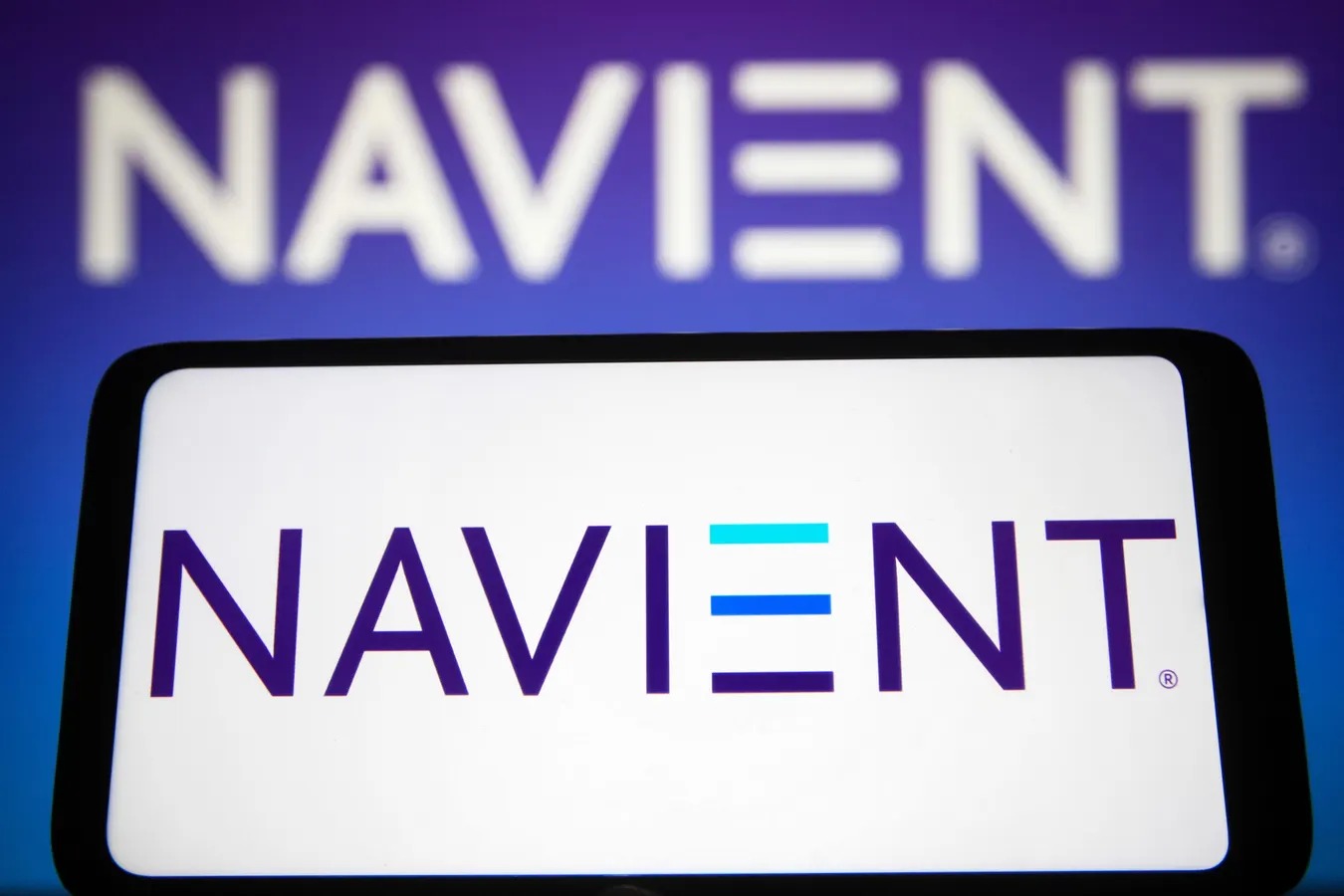

Finance
Who Is A Subscriber To Health Insurance?
Modified: February 21, 2024
Learn about subscribers to health insurance in the realm of personal finance. Understand the criteria and benefits of being a health insurance subscriber.
(Many of the links in this article redirect to a specific reviewed product. Your purchase of these products through affiliate links helps to generate commission for LiveWell, at no extra cost. Learn more)
Table of Contents
- Introduction
- Definition of Health Insurance Subscriber
- Characteristics of Health Insurance Subscribers
- Eligibility for Health Insurance Subscriptions
- Benefits of Health Insurance Subscriptions
- Role of Health Insurance Subscribers in the Healthcare System
- Factors Influencing Health Insurance Subscription
- Challenges Faced by Health Insurance Subscribers
- Conclusion
Introduction
Health insurance is a crucial component of ensuring access to quality healthcare for individuals and families. It provides financial protection against the high costs of medical treatments and services. However, to fully understand the concept of health insurance, we need to know who exactly qualifies as a subscriber to health insurance.
A health insurance subscriber, often referred to as a policyholder or member, is an individual or an entity who holds a health insurance policy with an insurance provider. This policy entitles them to various benefits and coverage for medical expenses.
Health insurance subscribers can include individuals, families, self-employed professionals, and even employees of organizations that provide group health insurance coverage. They play a vital role in the healthcare system by paying regular premiums to the insurance company, which in turn provides them with financial protection and access to medical services.
In this article, we will explore the characteristics of health insurance subscribers, their eligibility requirements, the benefits they enjoy, their role in the healthcare system, the factors influencing health insurance subscriptions, and the challenges they may face in navigating the complex insurance landscape.
Understanding the role of health insurance subscribers is essential for both individuals seeking coverage and policymakers shaping healthcare regulations. It allows us to comprehend the impact of health insurance on overall healthcare accessibility and affordability.
Definition of Health Insurance Subscriber
A health insurance subscriber is an individual or entity that obtains a health insurance policy from an insurance provider. They are the primary policyholder and have the legal and financial obligations associated with the policy. The subscriber pays regular premiums to the insurance company in exchange for coverage and benefits.
Health insurance subscribers can be individuals, families, or even small businesses that provide health insurance coverage to their employees. They have the authority to make decisions regarding their coverage and choose the appropriate plan that suits their healthcare needs.
As a subscriber, individuals have the right to access healthcare services and receive coverage for medical expenses as outlined in their health insurance policy. They can visit healthcare providers, hospitals, clinics, and specialists within the network determined by their insurance plan.
It’s essential to note that being a health insurance subscriber does not guarantee automatic coverage for all medical services. The extent of coverage and the types of services covered can vary depending on the specific policy and insurance plan chosen. Some plans may have limitations, exclusions, or higher out-of-pocket costs, so it’s crucial for subscribers to carefully review the terms and conditions of their policy.
Furthermore, as a health insurance subscriber, individuals are responsible for paying their share of costs, including deductibles, co-pays, and co-insurance. These out-of-pocket expenses contribute to the overall management of healthcare costs and help ensure that individuals have a vested interest in their own healthcare decisions.
In summary, a health insurance subscriber is the policyholder who obtains a health insurance policy, pays regular premiums, and has the right to access healthcare services and receive coverage for eligible medical expenses. They play a critical role in managing their own healthcare and financial well-being by understanding their policy and actively participating in decisions regarding their healthcare needs.
Characteristics of Health Insurance Subscribers
Health insurance subscribers come from diverse backgrounds and have various characteristics that define their enrollment in a health insurance plan. Understanding these characteristics can provide valuable insights into the demographics and needs of the insured population. Here are some key characteristics of health insurance subscribers:
- Demographics: Health insurance subscribers can be individuals of any age group, gender, or marital status. They can be young adults just starting their careers, families with children, or retirees seeking coverage.
- Employment Status: Subscribers can be employed individuals who receive health insurance as part of their employee benefits package. They can also be self-employed or individuals who purchase insurance directly from the marketplace or an insurance agent.
- Family Coverage: Many subscribers choose family coverage, which extends the health insurance benefits to their spouse and dependent children. This ensures that the entire family has access to healthcare services.
- Medical History: Subscribers may have pre-existing medical conditions or a history of chronic diseases. This can influence the choice of insurance plans and the coverage they seek.
- Financial Considerations: The affordability of insurance premiums is an important factor for subscribers. They carefully review the cost of premiums, deductibles, co-pays, and other out-of-pocket expenses to match their budget and financial capabilities.
- Healthcare Needs: Subscribers have different healthcare needs, such as preventive care, prescription drugs, specialist visits, or maternity coverage. They choose plans that align with their specific health conditions and anticipated medical needs.
- Geographic Location: Subscribers’ geographic location may impact the availability of healthcare providers and the network options they have. Rural areas may have limited provider networks compared to urban areas.
- Insurance Literacy: The level of knowledge and understanding of health insurance varies among subscribers. Some may be well-versed in insurance terminology and policy details, while others may require assistance in navigating the complexities of the system.
These characteristics highlight the diversity within the population of health insurance subscribers. By recognizing and understanding these characteristics, policymakers and insurance providers can tailor their offerings to meet the unique needs of different subscriber groups, ensuring that healthcare coverage remains accessible and affordable for all.
Eligibility for Health Insurance Subscriptions
Eligibility for health insurance subscriptions varies depending on the country’s healthcare system and the type of insurance plan. While specific eligibility criteria may differ, there are common factors that determine who can subscribe to health insurance. Here are the key considerations for eligibility:
- Employment: Many individuals become eligible for health insurance through their employment. Employers may offer group health insurance plans to their employees, which allows them to enroll in the coverage provided by the organization.
- Self-Employed: Self-employed individuals can also obtain health insurance subscriptions. They can purchase plans directly from insurance providers or through marketplace exchanges designed for self-employed individuals and small businesses.
- Family Coverage: Family coverage options extend eligibility to the spouse and dependent children of the primary subscriber. This ensures that the entire family receives healthcare coverage under a single policy.
- Government Programs: Many countries have government-sponsored programs that provide health insurance coverage to certain eligible populations. These programs ensure that individuals who meet specific income or social criteria can access affordable healthcare services.
- Age: Some health insurance plans have age restrictions for enrollment. For example, children may be covered under their parent’s insurance until a certain age or until they complete their education.
- Life Events: Certain life events, such as marriage, divorce, the birth of a child, or loss of coverage due to job loss, can make individuals eligible for a special enrollment period. This allows them to enroll in health insurance outside of the regular enrollment periods.
- Citizenship/Residency: In many countries, health insurance eligibility is tied to citizenship or residency status. Individuals who are citizens or legal residents are typically eligible to obtain health insurance.
- Open Enrollment Periods: In some healthcare systems, there are specific enrollment periods during which individuals can enroll in health insurance. These periods ensure that people have a fair and consistent opportunity to obtain coverage.
It’s important to note that eligibility requirements may vary depending on the specific insurance plan and the regulations of the country or region. It is recommended that individuals consult with insurance providers or navigate government websites to determine their eligibility and explore the available options for health insurance subscriptions.
By providing a path to healthcare coverage for eligible individuals and families, health insurance subscriptions contribute to increased accessibility and affordability of medical services, promoting overall health and well-being.
Benefits of Health Insurance Subscriptions
Health insurance subscriptions offer a wide range of benefits that provide individuals and families with financial protection and access to healthcare services. Let’s explore some of the key benefits associated with health insurance subscriptions:
- Financial Protection: Health insurance provides individuals with financial safeguards against high healthcare costs. Without insurance, medical expenses can quickly accumulate and become a significant burden. With insurance, subscribers are protected from excessive out-of-pocket expenses, which can help maintain their financial stability.
- Access to Medical Services: Health insurance ensures that individuals have access to a network of healthcare providers, hospitals, clinics, and specialists. Subscribers can receive necessary medical care, including preventive services, screenings, vaccinations, and treatment for illnesses or injuries.
- Coverage for Prescription Medications: Many health insurance plans offer coverage for prescription medications. This helps reduce the cost of necessary medications, ensuring that individuals can afford the medications prescribed by their healthcare providers.
- Preventive Care: Health insurance plans often include coverage for preventive care services such as annual check-ups, cancer screenings, vaccinations, and wellness visits. This focus on preventive care helps individuals stay proactive about their health and can lead to early detection and prevention of diseases.
- Specialized and Emergency Care: Health insurance subscriptions typically cover specialized care, such as visits to specialists, diagnostic tests, and procedures. Additionally, in emergency situations, insurance provides coverage for emergency room visits and hospitalizations, ensuring timely access to critical care.
- Mental Health and Substance Abuse Services: Many health insurance plans include coverage for mental health services, counseling, and substance abuse treatment. This recognizes the importance of overall well-being and offers support for individuals facing mental health challenges.
- Maternity and Pediatric Care: Health insurance subscriptions often provide coverage for maternity care, including prenatal visits, childbirth, and postnatal care. Pediatric care for newborns and young children is also typically covered, ensuring they receive necessary medical attention and preventive services.
- Network Discounts: Insurance plans often negotiate discounted rates with healthcare providers within their network. This means that subscribers receive services at a lower cost compared to if they were to pay out-of-pocket. The negotiated rates help maximize the value of insurance coverage.
These benefits highlight the critical role of health insurance subscriptions in maintaining individuals’ health and financial well-being. By providing access to quality healthcare services and reducing the burden of medical costs, health insurance plays a crucial role in promoting overall health and peace of mind for subscribers.
Role of Health Insurance Subscribers in the Healthcare System
Health insurance subscribers play a significant role in the healthcare system, acting as active participants and contributors. Their involvement helps shape the accessibility, affordability, and quality of healthcare services. Here are some key aspects of their role:
- Financial Responsibility: Health insurance subscribers bear financial responsibility for their healthcare costs. They pay regular premiums to the insurance company, which helps fund and sustain the healthcare system. Their contributions, along with those of other subscribers, form a pool of funds that are used to cover medical expenses.
- Consumer Choice: Subscribers have the ability to choose the health insurance plan that best suits their needs and preferences. This consumer choice encourages competition among insurance companies, leading to a wider range of coverage options and potential improvements in quality and affordability.
- Healthcare Decision-making: Health insurance subscribers have decision-making power when it comes to their healthcare. They can choose their primary care provider, visit specialists, and decide on the types of treatments or procedures they receive. Their active participation in medical decisions helps shape the overall delivery of healthcare services.
- Advocacy for Healthcare Rights: As subscribers, individuals have the right to voice their concerns and advocate for their healthcare rights. They can question coverage denials, file appeals or grievances, and engage in discussions aimed at improving the healthcare system. By exercising their rights, subscribers can contribute to positive changes and improvements in healthcare policies.
- Promotion of Health and Wellness: Health insurance subscribers have access to preventive care services, which encourage a proactive approach to maintaining health and preventing diseases. By taking advantage of preventive services and adopting healthy behaviors, subscribers contribute to their own well-being and help reduce the burden on the healthcare system.
- Support for Healthcare Providers: Health insurance subscribers provide essential financial support to healthcare providers. Their insurance coverage allows providers to receive payment for services rendered, ensuring the sustainability of healthcare facilities and the availability of quality care.
- Use of Resources Responsibly: Subscribers play a role in using healthcare resources responsibly. By seeking appropriate care, utilizing preventive services, and adhering to recommended treatments, they help alleviate the strain on the healthcare system and optimize the utilization of resources.
Overall, health insurance subscribers contribute to the functioning of the healthcare system by providing financial resources, making informed healthcare choices, advocating for their healthcare rights, and promoting a culture of wellness and responsibility. Their active involvement helps maintain a balanced and sustainable healthcare environment for individuals, healthcare providers, and society as a whole.
Factors Influencing Health Insurance Subscription
There are several factors that influence individuals’ decisions to subscribe to health insurance. These factors can vary from person to person and are shaped by a range of personal, financial, and environmental considerations. Let’s explore some of the key factors that influence health insurance subscription:
- Financial Considerations: Affordability is a significant factor in determining whether individuals choose to subscribe to health insurance. The cost of premiums, deductibles, and co-pays all impact an individual’s decision. It is essential for individuals to assess their financial capabilities and seek plans that align with their budgetary needs.
- Employment Status: Employment is a common pathway to health insurance coverage. Many individuals have the option to enroll in employer-sponsored health insurance plans, which often provide a more affordable and comprehensive coverage option compared to individual plans.
- Individual or Family Needs: Health insurance needs vary based on an individual’s or family’s specific healthcare requirements. Factors such as age, pre-existing conditions, family size, and anticipated medical needs play a role in determining the level of coverage needed and the type of plan that is most suitable.
- Government Mandates and Penalties: In some countries, there may be government mandates and penalties for not having health insurance coverage. These mandates encourage individuals to enroll in health insurance to avoid financial penalties and ensure compliance with the law.
- Personal Health and Risk Tolerance: Individuals with chronic conditions or a history of medical issues may have a higher incentive to seek health insurance coverage. They understand the importance of having financial protection and access to necessary medical services to manage their health conditions effectively.
- Perceived Value of Health Insurance: Individuals weigh the perceived value of health insurance against the cost of premiums and potential out-of-pocket expenses. They consider the potential benefits, coverage limitations, and the peace of mind that insurance can provide in case of unexpected medical expenses.
- Accessibility and Availability: The availability of health insurance options plays a significant role in individuals’ decisions to subscribe to a plan. Limited options or lack of insurance providers in certain regions may impact individuals’ ability to obtain coverage.
It’s important to recognize that these factors are interconnected and can influence each other. For example, employment status may impact financial considerations, and personal health may shape the perceived value of health insurance.
Additionally, individual preferences, cultural beliefs, and the level of insurance literacy can also impact an individual’s decision to subscribe to health insurance. Some individuals may prioritize having insurance for peace of mind, while others may be more comfortable with assuming the risk and potential costs associated with being uninsured.
Ultimately, the decision to subscribe to health insurance is a highly individualized one, influenced by a combination of financial, personal, and environmental factors. By understanding these factors, insurers and policymakers can better tailor insurance offerings and create accessible options that meet the diverse needs of the population.
Challenges Faced by Health Insurance Subscribers
While health insurance provides valuable coverage and benefits, subscribers may also face certain challenges in navigating the healthcare system and maximizing the value of their insurance. Some of the common challenges faced by health insurance subscribers include:
- Cost of Premiums: The cost of health insurance premiums can be a significant challenge for subscribers, especially for those with limited financial resources. Balancing the affordability of premiums with the level of coverage desired can be a difficult decision-making process.
- Out-of-Pocket Expenses: Subscribers often face out-of-pocket expenses such as deductibles, co-pays, and co-insurance, which contribute to the overall cost of healthcare. These costs can sometimes add up and pose a financial burden, particularly for individuals requiring frequent medical care or managing chronic conditions.
- Network Limitations: Health insurance plans typically have a designated network of healthcare providers, and subscribers may face challenges in finding providers within their network or being able to see their preferred healthcare professionals. Limited network options in certain geographic areas can also pose challenges for accessing specialized care.
- Coverage Limitations and Exclusions: Some health insurance plans have limitations and exclusions on certain procedures, treatments, or services. Understanding the coverage details, such as what is covered and what is not, can be a challenge for subscribers. This may lead to confusion or unexpected costs if subscribers are unaware of these limitations.
- Administrative Complexity: Dealing with health insurance paperwork, claims, and understanding policy details can be complex and time-consuming. Navigating through the administrative processes and understanding insurance terminology can be challenging, especially for individuals with limited experience or insurance literacy.
- Enrollment Periods and Eligibility Requirements: Enrollment periods and eligibility requirements can create challenges for individuals seeking to obtain or change health insurance coverage. Missing enrollment periods or not meeting eligibility criteria may result in gaps in coverage, leaving individuals without insurance or limited access to healthcare services in the interim.
- Healthcare Provider Disputes: Disputes between healthcare providers and insurance companies can sometimes impact subscribers. These disputes can result in delayed payments, denials of coverage, or confusion regarding medical bills. Subscribers may need to navigate through these challenges to ensure their services are covered appropriately.
These challenges highlight the need for health insurance subscribers to be proactive and engaged in managing their insurance coverage. It is important for subscribers to carefully review their policy details, understand their coverage, ask questions, and seek assistance when needed to navigate the complexities of the healthcare system.
Furthermore, policymakers and insurance providers play a significant role in addressing these challenges by improving transparency, simplifying administrative processes, and enhancing communication channels to ensure that subscribers can fully utilize their health insurance benefits and access needed healthcare services.
Conclusion
Health insurance subscribers play a crucial role in the healthcare system, ensuring access to affordable and quality healthcare services. They are individuals, families, and businesses that hold health insurance policies, paying regular premiums in exchange for coverage and benefits.
Throughout this article, we have explored the definition of health insurance subscribers, their characteristics, eligibility requirements, and the benefits they enjoy. We have discussed their role in the healthcare system, including their financial responsibility, decision-making power, and advocacy for healthcare rights. We have also highlighted the factors that influence health insurance subscription, such as financial considerations, employment status, and personal health needs.
However, health insurance subscribers also face challenges, including the cost of premiums, out-of-pocket expenses, network limitations, coverage restrictions, and administrative complexities. These challenges can impact their ability to access the healthcare services they need and to fully utilize their insurance benefits.
It is crucial for subscribers to be informed consumers, carefully reviewing policy details, understanding coverage limitations, and actively participating in healthcare decision-making. It is equally important for policymakers and insurance providers to address these challenges by improving transparency, simplifying administrative processes, and enhancing communication channels to facilitate a smooth and positive experience for subscribers.
Ultimately, health insurance subscribers are vital stakeholders in the healthcare system, contributing to its sustainability and the accessibility of healthcare services. By being informed, engaged, and advocating for their rights, health insurance subscribers can help shape a healthcare system that better meets the needs of individuals, families, and communities.














